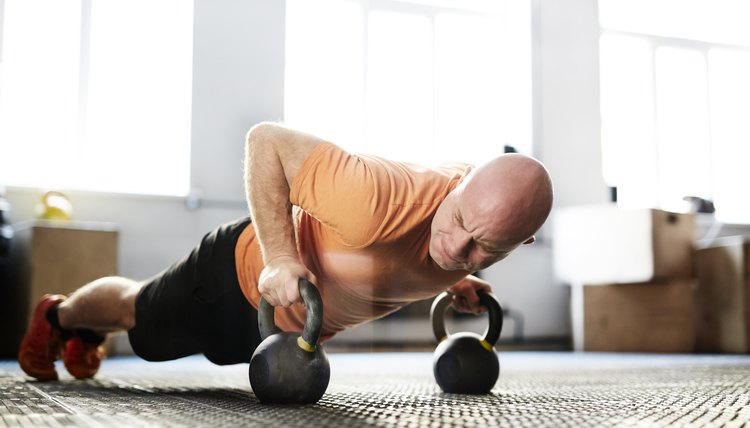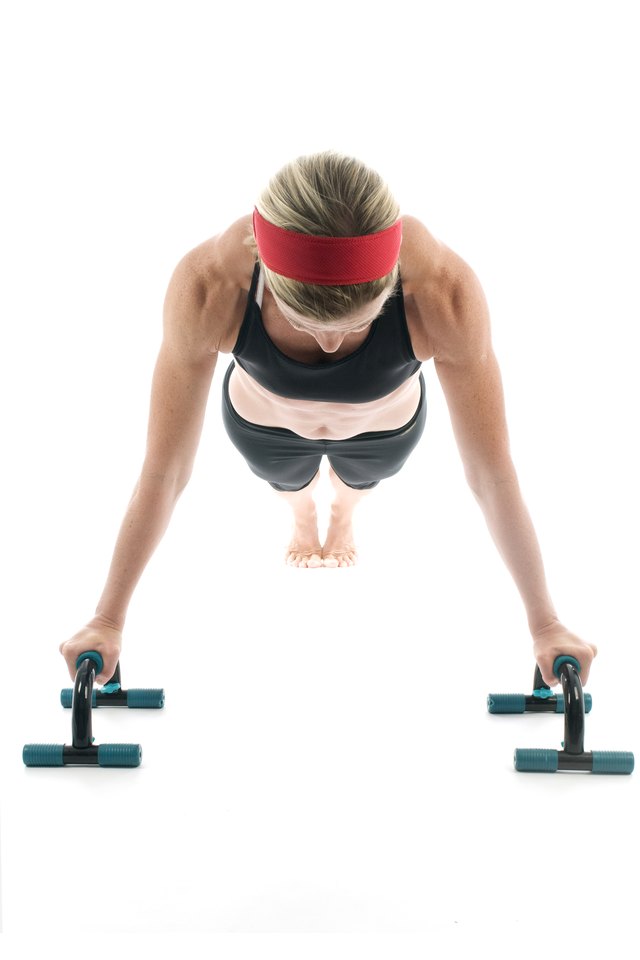Forearm Blasting With Pushups

Strong forearms not only look good, but they also improve your performance in other exercises, such as deadlifts and pull-ups, and in certain sports, such as tennis. Lists of the best forearm-blasting exercises include the usual suspects: weighted wrist curls, preacher curls, reverse curls and farmer's carries. But push-ups don't make those lists.
While your forearms do make a contribution during push-ups, most of the work comes from the chest and triceps. If you're limited to push-ups, however, you have a few options that will effectively fatigue your forearms: push-up bar push-ups, knuckle push-ups and finger push-ups.
Push-Up Bar Push-Ups
A pair of push-up bars is a smart buy for any push-up enthusiast. Traditional push-ups with the palms flat on the floor force the wrists to hyperextend, which can cause pain and nerve damage from overuse. Using push-up bars puts your wrists in a more neutral state. However, it also puts them in a less stable state. To stabilize your wrists, your forearms have to work harder.

Change up your push-up to work your forearms.
Some push-up bars are static, while others rotate on a stable base. You can also use dumbbells, or even kettlebells to support your hands. Whichever type you have access to, keep your wrists aligned with the backs of your hands, or close to it, to protect your wrists, then let your forearms feel the burn.
Knuckle Push-Ups
Knuckle push-ups are exactly what they sound like. Instead of palms flat on the ground, you make a fist and do the push-ups on the flat area in between your first and second knuckles. Your wrist and hand alignment here are similar to using push-up bars, and the same instability is created that needs to be stabilized by the forearms. Thus, the forearms bear more of the weight and get burned out quicker.
Finger Push-Ups
These are one of the hardest and most advanced push-up varieties around. Basically, you're doing a regular push-up, but your palms are lifted off the ground and your weight is being supported on your finger pads. This takes an incredible amount of finger and forearm strength, but you can work up to it by doing short plank holds on your fingertips.
Once you're able to hold a fingertip plank for at least a few seconds, try a half fingertip push-up. Elevate one hand on a yoga block or similarly sized stable object, and come up on to the fingertips of the other hand. Do as many half fingertip push-ups as you can with good form. When you can complete a set of half fingertip push-ups, remove the yoga block and go for full fingertip push-ups.
Explore In Depth
References
Writer Bio
Jody Braverman is a professional writer and editor based in Atlanta, GA. She received a Bachelor of Arts in English from the University of Maryland, and she is a certified personal trainer, fitness nutrition specialist, and yoga teacher. She has written for various online and print publications, including Livestrong.com, SFGate, Healthfully, and Chron.com. Visit the writer at www.JodyBraverman.com.
